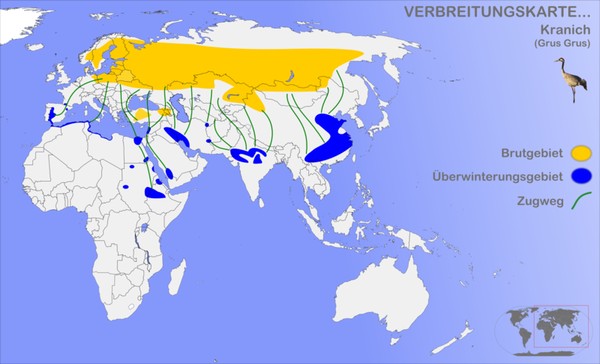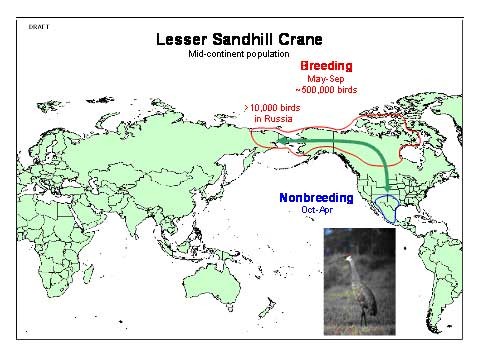
In my ongoing exploration of the Birds of Europe I encountered a crane that resembles our sandhills.
Eurasian or common cranes — often called just “cranes” — are native to Europe, Asia and Africa. Their scientific name Grus grus indicates they were the first crane named by Linnaeus. He would have seen them in summer in his homeland, Sweden, but couldn’t know about sandhill cranes (Grus canadensis) until Europeans sent him specimens from the Americas.
The Eurasian crane is taller than a sandhill with black and white on his neck and face. The closeups below provide a good comparison, first the Eurasian crane, then the sandhill.


Do these two species ever meet? Maybe.
Eurasian cranes breed across Europe to northern Russia and Asia, as shown below.

Sandhill cranes are confined to North America except for a subspecies, the lesser sandhill crane, that breeds in Alaska and has jumped the Bering Sea to northeastern Russia. USGS estimates that more than 10,000 lesser sandhill cranes now breed in Russia.

The two areas look disjoint on the maps but you never know. Perhaps the “original” crane will meet ours some day.
(photos from Wikimedia Commons; click on the images to see the originals)
*In 2016 the scientific name of the sandhill crane was changed to Antigone canadensis Whooping cranes are still in the Grus genus.
There has been a vagrant Common Crane in northern Arizona since early May. Maybe the meeting will happen sooner than we think!
Donna, Sandhill Cranes aren’t as common in Arizona as they are in neighboring New Mexico. But the ones that do winter here spend their time down in the southern part of the state, but who knows. There are Common Cranes that live and travel with Sandhill Cranes in Texas.
I got to see the Common Crane at Mormon Lake earlier this year, it was a great bird to see. And you could easily fly into PHX, go see it and fly out the same day ; )
https://flic.kr/p/U1HW29
Very good discussion